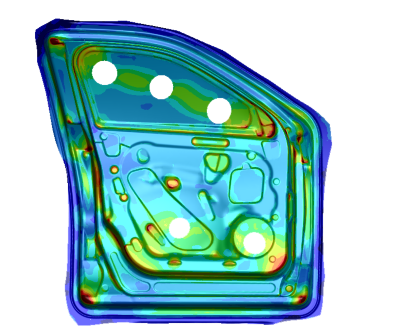
LEAP Australia is pleased to announce the release of ANSYS 2023 R1 which is now available to ANSYS customers across Australia and New Zealand from the ANSYS Customer Portal.
Ansys 2023 R1 enables engineering teams to handle the complex challenges required to develop the next generation of world-changing products. Advances in product design drive the ability to replicate the behaviour of complex systems so you can find novel solutions. The new products, technologies, and tools that make up 2023 R1 enable engineering teams to examine products and systems rigorously under varying conditions. Simulation allows stakeholders to expand their knowledge and optimize designs at every stage of the product development process.
3D Design Updates
Ansys 2023 R1 expands Discovery’s astonishing live physics, innovative user experience, and robust modeling tools, making it a critical piece of the Ansys digital simulation thread and the best place to start simulation for every engineer and analyst.
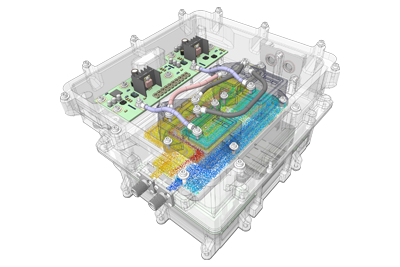
Acoustics Analysis Updates
In 2023 R1, Ansys Sound updates include new enhancements to the Sound Analysis & Specification (SAS) module, allowing users to access integration & differentiation tools to convert, display and analyze (time, spectrum, spectrogram) vibration signals. Updates to the Virtual Reality Sound (VRS) module include the ability for users to accurately play multichannel sound files on multiple speaker setups for any configuration, making the sound comparison as easy as possible. Finally, updates to the Active Sound Design for Electric Vehicles (ASDforEV) module includes access to a new sound design method called Granular Synthesis to rapidly sketch and tune active sounds from a single sound sample.

Additive Manufacturing Update
Ansys 2023 R1 continues expanding toolsets for Additive Manufacturing users, streamlining design, simulation, and manufacturing workflows. Adding new wizards for distortion compensation and scan pattern-based calibration automates the simulation setup process, reducing the need for lengthy manual setup.

Autonomous Vehicle Simulation Updates
From customised data labelling, improvements in the accuracy of Radar & Lidar sensor outputs, backend distributed & controlled processing, to an effortless handshake with the driving simulator – 2023 R1 updates are sure to impress AVxcelerate users.

Connect Updates
Ansys 2023 R1 builds on the capabilities of materials, SPDM, optimisation, and MBSE to amplify simulation benefits by improving engineering efficiency, supporting collaboration, and accelerating innovation. The Ansys Connect collection boasts UX improvements, new integrations, and ease-of-use features to connect the latest processes, tools, and data readily for different engineering teams.
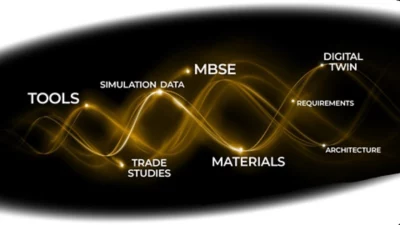
Digital Mission Engineering Updates
The latest release of STK continues to expand and enhance integration across Ansys multiphysics solvers, boosting confidence in early concept system design, improving decision-making, and improving the efficiency of the engineering process.
- Enhanced Radar Clutter Modeling
- Integrated EOIR Thermal Model Loading from Aviator
- Cislunar Support

Digital Twin Updates
In 2023 R1, Ansys Twin Builder continues to innovate and provide our customers with the right technology, increasing their digital twin prediction.
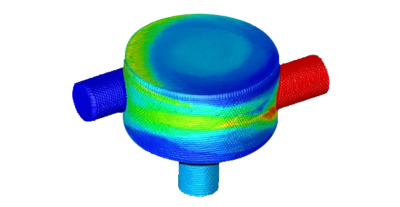
Electronics Updates
In the 2023 R1 release, Ansys Electronics demonstrates technology leadership in computational electromagnetics. Improvements in simulation performance, meshing, integrations with other Ansys tools, automated workflows, and modeling capabilities extend our leadership in electromagnetic simulation and computational multiphysics for designing high-speed PCBs, electric machines, antennae, radar, and other electronic systems.
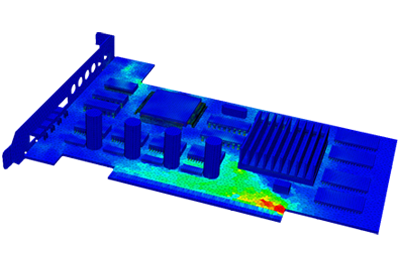
Embedded Software Updates
Ansys 2023 R1 strengthens the interoperability in A&D with ARINC 661, software architecture & FACE, and Automotive (AUTOSAR). Cloud availability through Ansys Gateway powered by AWS brings greater flexibility in deploying SCADE products. In addition, test generation assistance improvements speed up the software V&V workflow.

- Unleash the power of multiple GPUs for a broad spectrum of applications with the full release of the multi-GPU solverin Ansys Fluent
- Address sustainability challenges with accurate hydrogen modeling throughout its value chainin Ansys Fluent
- Automate workflows and craft customized solutions efficiently with an embedded PyConsolein Ansys Fluent
- Major advancements for aerospace applications for all flight regimes in Fluent Aero, a Virtual Blade Model,and a built-in Aero-Optical workflowin Ansys Fluent
- Automatically create a high-fidelity CAD for an extended set of blade features in TurboGrid
- More accurate IC enginesimulations with Arc Channel Tracking (ACT) spark model in Ansys Forte
- DEM-SPH workflow enhancementsand extended Fluent two-way couplingin Ansys Rocky
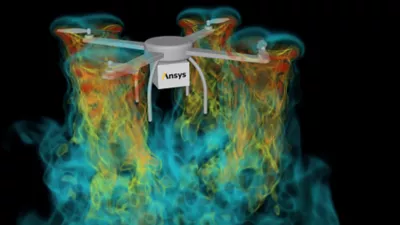
Materials Updates
Enhanced UX
Ansys 2023 R1 brings a more configurable, adaptable, and localized authoritative source of truth for materials with features like the new CAD connector to guarantee traceability between CAD material records and simulation models.
Proactive Sustainability: now on the cloud
The latest eco data and Eco Audit tool help explore and iterate rapidly–now available with Granta Selectoron Ansys Gateway powered by AWS.
Help Simulation Accuracy with Materials
The latest metals, polymers, PCB, and electromagnetic absorbing data support automotive and high-tech innovation with applications from AV to 5G.

Optics Updates
Easily create and tolerate complex surfaces in sequential mode, trace single rays in nonsequential mode, simulate and optimize complex 2D gratings, and maintain lens surface equations in stored optical parts.

Photonics Updates
- Modernised CAD view in FDTD
- Learn and use Ansys Lumerical RCWA easier with anew GUI
- Access all optics examples from the new Ansys Optics Launcher
- Experience the power of the cloud via the new Ansys Gateway powered by AWS
- Accurately simulate your macroscopic optics design coupled to its nano-scale building blocks via new streamlined workflows between Ansys Lumerical, Zemax, and Speos
- Predict the behavior of active devices via the new self-consistent Ansys Lumerical MQW and Ansys Lumerical CHARGE simulations
- Verify PIC designs via layout-driven workflows in KLayout using the new streamlined layout import feature for component-level design
- Speed up your electro-optical co-simulation of photonic circuits by 5X
- New INTERCONNECT solver models quantum behavior in photonic integrated circuits
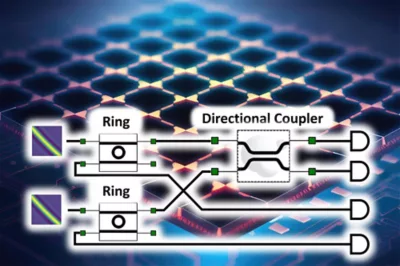
Safety Analysis Updates
- MTTF (Mean Time to Failure) and MTBF (Mean Time Between Failures) values in both FTAs and RBDs
- Beta version of CFT with integrated component fault tree editing in SysML and quantitative evaluation support
- The extended HARA risk graph with the ASIL none value for automotive

Structures Updates
In 2023 R1, the Structures Product Line delivers new features and capabilities that allow our users to perform more accurate, efficient, and customizable simulation analyses, including:
- An AI/ML Resource Prediction feature to provide estimates on expected solve time and memory usage required to solve an Ansys Mechanical simulation.
- Efficiently modify a CAD model without losing the associativity of the model’s features after setup, using geometry-based re-associativity with the Scoping Wizard that detects and reestablishes scoping in Mechanical.
- Improvements to LS-DYNA Incompressible Smooth Particle Hydrodynamics (ISPH) for improved data processing, better visualization, data transfer to Mechanical and Fluent, and more.
- Comprehensive battery safety workflow in LS-DYNA simulates thermal runaway following thermal and mechanical abuse. Predict the combined structural, electrical, electrochemical, and thermal (EET) responses of automotive batteries – validated through experiments.
- Enhancements to the Ansys Sherlock parts library include over 400,000 new parts added, allowing users to build more accurate models for analysis. Additionally, improved integrations between Sherlock, Mechanical & Icepak can handle multiple PCB assemblies for motherboard or daughter board applications.
